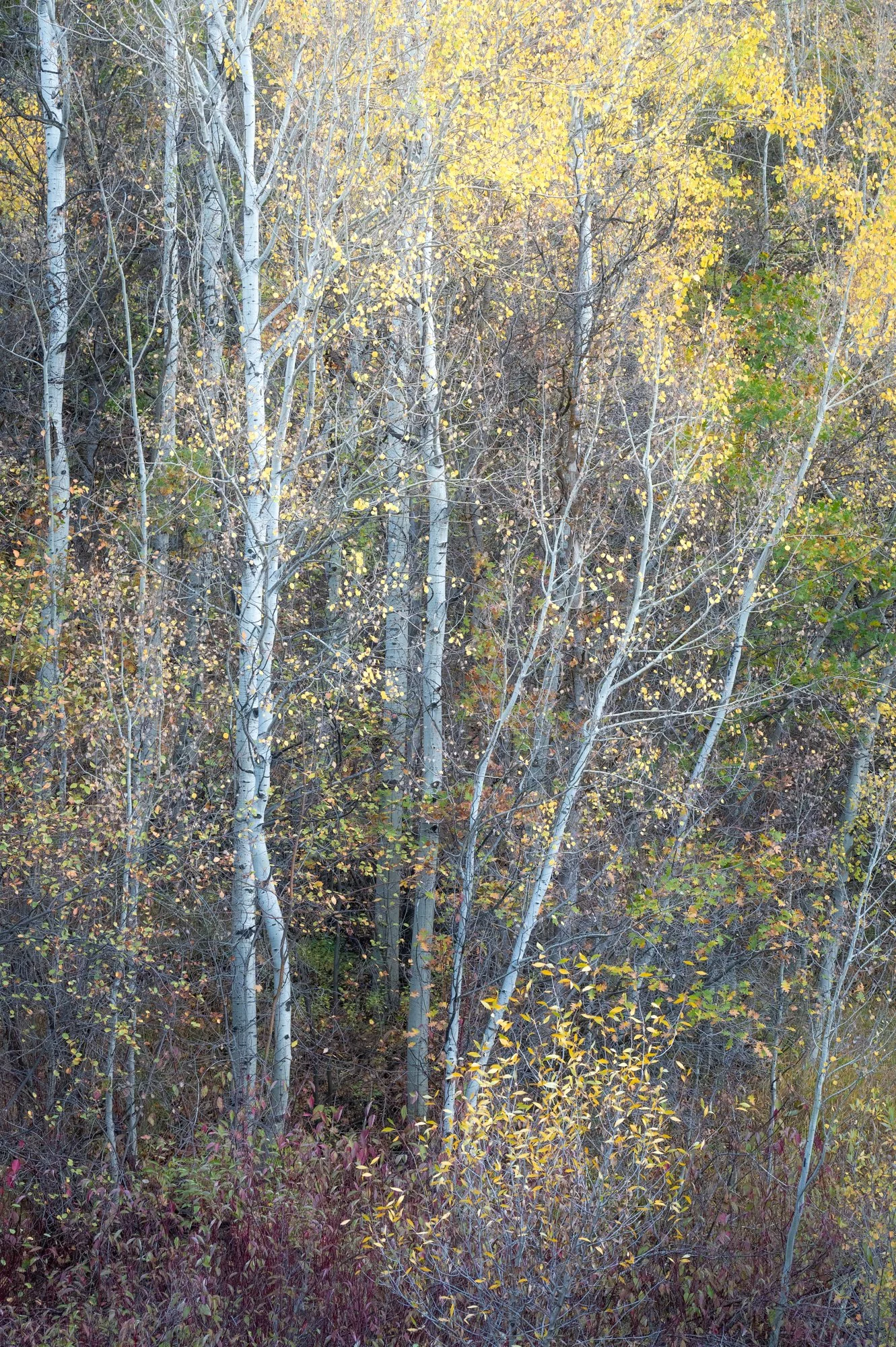Revisit
This is a nearby hiking location that I have visited frequently. We used to take our dogs snowshoeing on this trail regularly, and truth be told, I've never thought it was a particularly photogenic location.
Dog bags, maybe not so photogenic?
There’s a stream that I've never found a good vantage point to photograph from, and lots of dense brush along the often-muddy trail that is frequented by a lot of dogs and their people who don’t use the dog bag dispenser….
After not having been there for a number of years, last fall I went for a morning of photography and discovered that this canyon holds absolute magic light. It is a pretty narrow canyon, and the low angle of the autumn sun stays behind the southeastern ridge, keeping the trail in shadow. There is a lot of backlight from the sun bouncing off the slope on the north side of the canyon. Even the trees that are mostly sticks have a beautiful, glow in this soft light. To make it even more extra, there are a lot of different varieties of trees: aspens, maples, oak, dogwood all peacefully coexisting. In the fall, all of these trees show off their colors in different ways at different times, so there is always something catching the glow from backlight or shaded blue in the shadows.
Last year. Different conditions, same trees.
This image is nearly identical to one I took last year and I sought the location out purposefully to see how it looked different this year. I loved the image from last year, and I did not necessarily seek to re-create it, but I did want to revisit it, like having a coffee with an old friend. Are they the same? Have they changed? What have they experienced since I last saw them?
It's a location that we've probably been to nearly a hundred times. Had I not revisited in that particular time of the year, and that hour of the day, I would never have known its secret beauty.
Not only do I like to revisit photography locations, but I also revisit repertoire. Every time I teach a familiar piece to a new student, it becomes new to me again, and I learn/re-learn it alongside the student.
Sometimes I do a fresh deep dive, looking at the score, finding new editions, reading a new article, or sometimes not changing, and simply finding comfort in my established way of thinking about or teaching the work.
My latest viola repertoire revisit is the much loved, often played, perhaps overplayed, viola concerto by William Walton.
I had been pretty satisfied with the current edition that includes bowings and other markings by the English violist Frederick Riddle and and informative preface by the editor Christopher Wellington. I appreciated the flow that his markings introduced into the music; it became less stuck and felt more gently undulating. I put a particular amount of weight into the notion that Frederick Riddle's was the performance that the composer himself preferred, and so, for all those reasons, I accepted the edition with Frederick Riddle's markings. (Though I included some markings from the prior edition as reference…)
Two editions, another revisit, like coffee with an old friend. Have they changed? Have I changed?
Recently a friend sent me a new-to-me article that questions whether or not William Walton felt that strongly about Riddle's performance markings, and it raised enough questions in my mind that I began another revisit.
It propelled me to get the original 1929 orchestra score of the concerto through Inter-library loan and to rediscover my copy of the previously published edition. I am trying to find the purity of William Walton’s ideas before all the viola soloists made their own marks on the solo part. (And in fairness, soloists *should* make their marks, but as performers, we have to FIRST ask ourselves, “What was the intention of the composer?” not “What was the intention of the performer.”)(Which is another reason to start with a score and not a recording but that’s a discussion for another time…)
I discovered magic light by revisiting a much-seen place at a new time. I hope to find new magic in the Walton viola concerto by revisiting the piece with a new perspective, even if, for now, that perspective is still a question mark.
What revisiting both of these things reveals to me is that there is not really a definitive answer, a definitive interpretation, or a definitive view of a piece of art, a location, or a composition. When I approach familiar locations or familiar viola pieces with a question mark instead of a period, there is always the possibility to discover magic.




